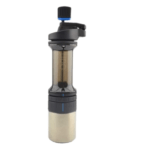How To Clean Mold in Coffee Maker
Coffee makers are bound to get dirty over time. That is inevitable. However, what happens when the unthinkable happens and you end up with mold in your coffee maker? Is it time to toss it and buy another or can it be salvaged?
Lucky for you, there is a way to repair a moldy coffee maker back to use, so you don’t have to say farewell to your favorite coffee machine quite yet. Follow our quick step by step guide on how to safely and efficiently remove mold from your java maker next time you run into this issue.

What Causes Mold in Coffee Maker?
First and foremost, let’s talk about how mold can accumulate in a coffee maker. Knowing this not only helps us have a better understanding when it comes to cleaning a machine, but also helps work towards prevention for the future. Water is mold’s favorite place to grow, so it makes a lot of sense that a coffee machine would be quite familiar with mold. This can become a huge concern as large amounts of mold can lead to sickness if ingested. That is why it is so crucial to keep a handle on this issue.
Most people think that hot water is enough to help flush out any inkling of mold that could be growing, but this is not the case. Mold can still grow with frequent hot water flushes. So what does combat mold the best? Vinegar is actually one of the best ways to remove mold. It’s sanitizing properties remove any stubborn remnants of mold that could be hiding in the crevices of the machine.
As far as prevention goes, there is no way to stop mold from growing in moist environments, so the best way to prevent mold from growing is by being proactive with frequent cleanings such as our step-by-step guide of flushing out the machine with vinegar.
Step by Step
As we said, vinegar has the best results in removing the mold, so if you have a coffee maker in your home. You need to keep whtie vinegar close by as well. It’s also helpful to do daily cleaning with water and soap, which we will give a step-by-step guide on as well.
Vinegar Cleaning
Depending on the type of coffee machine, the vinegar cleaning can look a bit different. However, these basic instructions can act as a guide no matter which version of a coffee maker you have:
- Mix equal parts water and vinegar into the water reservoir.
- Run the coffee machine through to allow for the mixture to break up any buildup and decalcify the inside of the machine.
- Let the machine set.
- Repeat this process one or two times until you feel that it has been cleaned fully.
- Complete this once every month or two, depending on the hardness of your water in the area. The harder the water, the more you will need to clear the machine of any potential mold.
Daily Cleaning
Yes. Every coffee machine needs some daily cleaning. There are a few different things that can benefit you down the road from a broken or moldy machine depending on your type of machine.
- Remove any removable parts such as a water reservoir or drink insert piece.
- Wash these thoroughly with warm water and soap.
- Break up any debris inside the machine with a paperclip. (This is especially important for pod-style coffee makers like K-cups, as debris is common and can lead to a broken machine very quickly.)
- Wipe down the exterior of the machine to prevent any gunk that can be stuck on.
While it might be a bit of a nuisance, these few quick steps can save you from doing major recovery work down the line. Put in the extra minute or two now so you don’t waste much more time later.
Tips and Tricks
Another important note is to be aware of how often you are using your coffee maker. If you let your machine sit for long periods of time without being used, then it is much more likely that you can have a moldy coffee maker on your hands than those who use theirs religiously every morning.
Dormant coffee makers are a breeding ground for mold, so it might be a good idea to give your vinegar cleaning an extra round or two if you haven’t been getting your java fix in for the past few days or you skipped your daily cleaning the last time.
Being aware of this issue not only makes for a cleaner and safer machine, but your coffee will taste loads better. After all, coffee with a side of mold isn’t on anyone’s list of favorite drinks.





